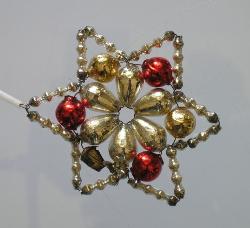Katarína Nádaská
The first written record of a Christmas tree was in an entry in the chronicles of Bremen from 1570, it was decorated with sweets and paper flowers within a building to which children of master craftsmen were invited. In the 17th and 18th century, the tree tradition spread to German cities of bourgeois families and senior officials. Only later did it reach European aristocratic palaces. In Slovakia, the Christmas tree appears in the 19th century, first in the cities and by the end of the century in rural areas which were dominated by small trees which were hung above the dining table.
The first gingerbreads and wax ornaments for tree decorations began to appear as early as the 18th century in Germany. In richer, noble, and city environments the trees were adorned with glass ornaments and garlands which were purchased in the store. But the making of tree decorations was also a family tradition of parents and children and occurred a few weeks before Christmas. They were made from paper, straw, embroidery, sewing of small presents, and ribbon. The beginning of the 20th century brought new rich assortment of Christmas traditions: chocolate truffles with different kinds of filling, garlands, angel hair, wooden nativity scenes (Bethlehem), and electric lights for the trees, and a pointed figure for the tip of the tree.
In rural areas of Slovakia the forerunners for decorations were straw wreaths hung over the table. The first ornaments were tied to ‘magical effects’ over the Christmas table – straw, beans, legumes, nuts, fresh or dried apples – were all signs of prosperity which the people prayed for in year to come. The traditional tree ornaments included sugar cubes wrapped in tinsel, gingerbread, and paper chains.
